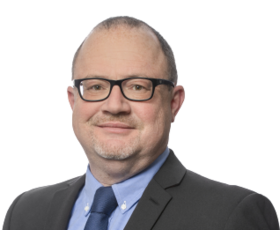


Market and sector review
July saw global equity markets posting positive returns, despite very high levels of volatility and extreme moves. What took place in the month caught many investors by surprise: a rotation out of year-to-date favourite sectors such as information technology – in particular the Magnificent Seven – and communication services into laggards or sectors that are generally considered more ‘value’, such as utilities, financials, industrials and energy. This sudden shift also meant smaller-cap stocks, which had trailed their larger peers considerably in the previous six months, performed very strongly (the Russell 2000 Index closed just shy of 9% ahead of the S&P 500 Index in July).
Healthcare was ahead of the overall market, with healthcare facilities, life sciences tools and services, and managed care leading the way, while healthcare equipment, pharmaceuticals and healthcare information technologies had more muted performances.
It is the sound fundamentals built on elevated levels of utilisation and the adoption of innovative solutions to tackle unmet medical needs that offer long-term optimism
What sparked the abrupt rotation in the market? The catalyst for this was undoubtedly a softer than expected US inflation print which, coupled with resilient economic growth and unemployment holding fairly steady, prompted market participants to increase their expectations for a rate cut in the coming months. Consequently, with short-term bonds performing better than longer-duration ones, the US yield curve steepened. A steepening of the yield curve has historically been a positive signal for value stocks and July was no exception.
Perhaps, to a lesser extent, a change in the political landscape, with President Biden exiting the race for the White House and Kamala Harris becoming the likely Democratic candidate in the next election, also supported the switch in market trend. The Trump agenda is considered by many inflationary, while a Democratic government should allow the Federal Reserve to get closer to its inflation goals and to continue to ease its monetary policy.
July also marked the beginning of the year’s second earnings season. In broad brushstrokes, large pharmaceutical companies posted solid sets of numbers for their second quarters, with some companies hinting to a more benign impact on drug pricing from the Inflation Reduction Act than perhaps anticipated by investors. Healthcare facilities also continued to beat consensus expectations on the back of robust utilisation; the high utilisation trend was reflected in managed care results, with some companies navigating the difficult utilisation environment better than others. The second quarter for medical devices was also mixed while life sciences tools and services posted results generally in line with analyst estimates, which was enough to cause a rally in this hitherto out-of-favour industry.
Fund performance
The Company’s NAV was up 1.6% in July, behind the benchmark (MSCI All Country World Daily Net Total Return Health Care Index) which was up 1.8% (both in sterling terms).
The main positive contributors in July relative to the benchmark were Novo Nordisk, Merck and Lonza Group. The Fund had no exposure to either Novo Nordisk or Merck during July, with the former caught up in the rotation downdraft mentioned above and the latter warning the market that its human papillomavirus vaccine, Gardasil, is facing near-term growth challenges in China. Lonza Group performed well in July following a strong set of 1H24 results, adding conviction to the idea the company’s FY24 forecasts are, at a minimum.
Negative contributors in the period under review were DexCom, RxSight and Merus. DexCom, by some distance the biggest detractor, announced not only a weak set of 2Q24 results, but an outlook for 2024 that was materially below market expectations. In short, the company has been through a widespread salesforce restructuring that has, unfortunately, coincided with lost customers and reduced revenue per patient metrics. There was no thesis changing news for either RxSight or Merus during the period, with the former appearing to suffer from contagion following a number of challenging 2Q24 financial results released by its high-growth, high-value medical device peers.
In July, we added positions in Avantor, Fresenius, Legend Biotech, Roche and Sandoz Group. The life sciences and tools subsector has been operating in a challenging environment, especially in the field of bioprocessing, but there are signs that momentum could be turning and Avantor is geared to that potential recovery at an attractive valuation. German healthcare services company Fresenius is starting to benefit from a restructuring designed to simplify the business and accelerate performance. While still early, recent financial results could drive both earnings momentum and, potentially, multiple expansions.
Legend Biotech’s primary focus is a blood cancer called multiple myeloma and they are in the process of expanding labelled indications for its lead asset, Carvykti. Once complete, both on the regulatory side and on the manufacturing side, the full commercial potential of Carvykti could and should be realised. Swiss-based pharmaceutical company Roche has struggled on a relative basis for some time but the tide could be turning given some green shoots are starting to appear in its pipeline in therapeutic areas such as obesity and Alzheimer’s disease. Sandoz Group is a generics business that was spun out of parent Novartis towards the end of 2023. With a focus on biosimilars, the barriers to entry feel high as does the potential for positive sales and earnings revisions. The positions were funded via sales of Elevance Health, Neurocrine Biosciences and Novartis.
Outlook
On a relative basis, the healthcare sector has struggled versus the broader market year to date but the tide has started to turn in recent weeks. Rotation has been a factor, with large-cap biotechnology and pharmaceutical companies appearing to benefit, but it is the sound fundamentals built on elevated levels of utilisation and the adoption of innovative solutions to tackle unmet medical needs that offer long-term optimism.




